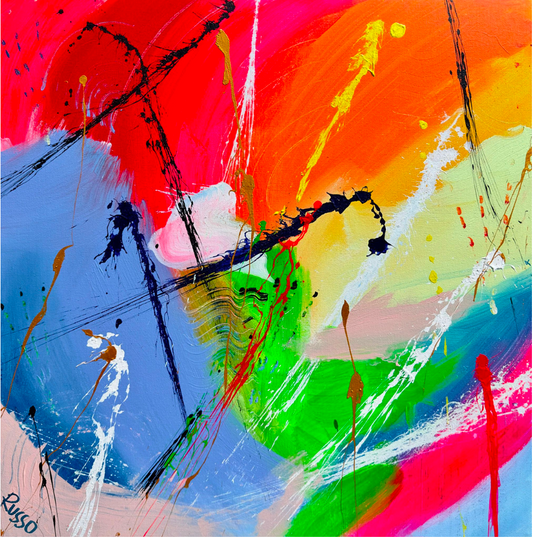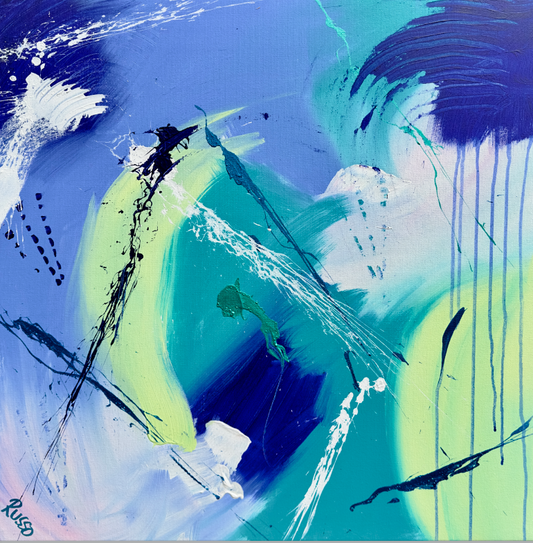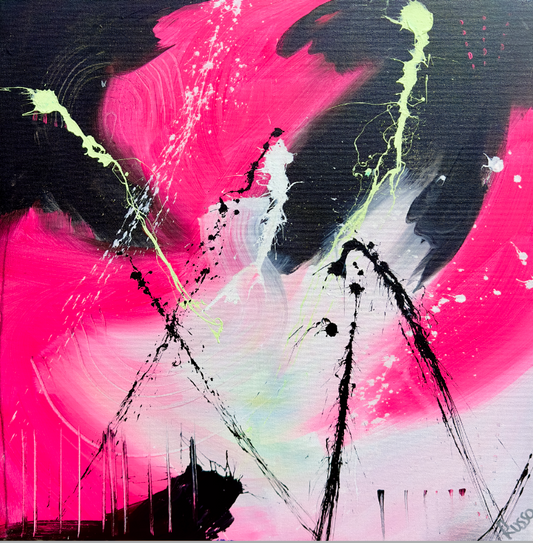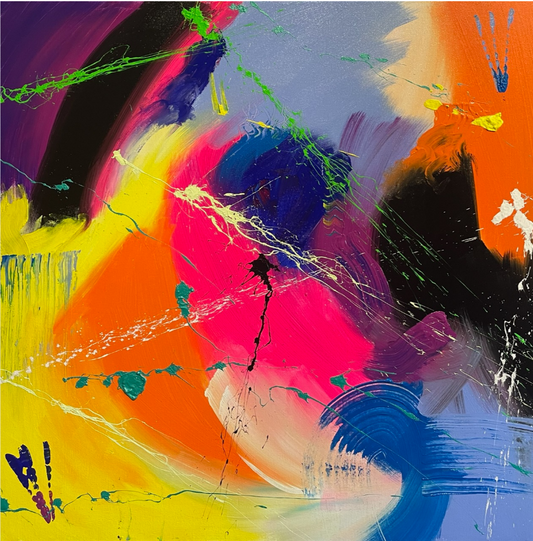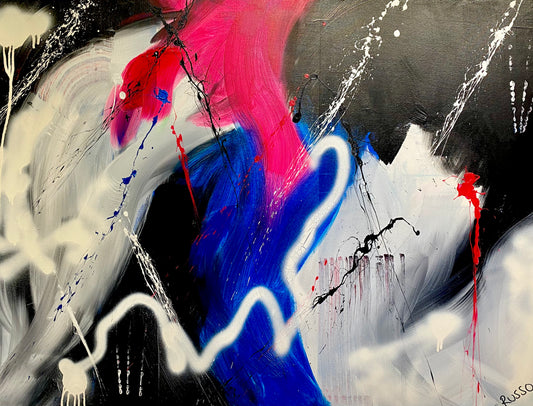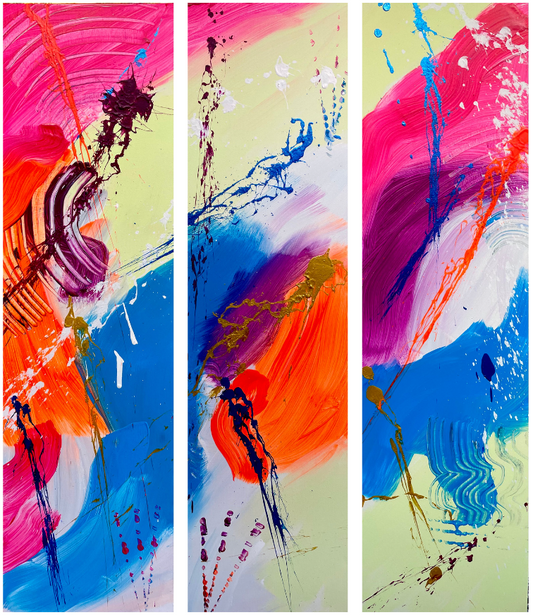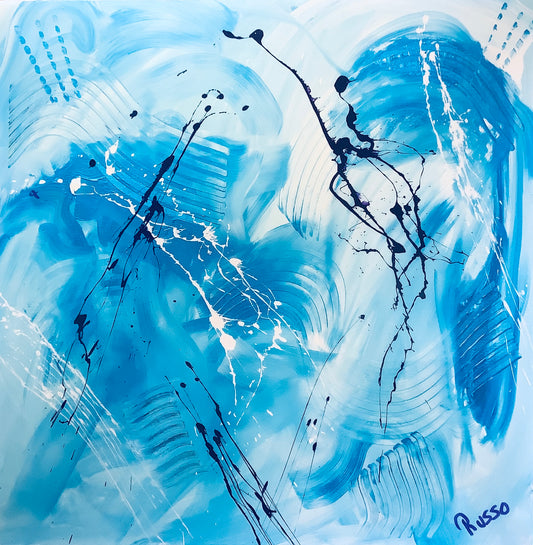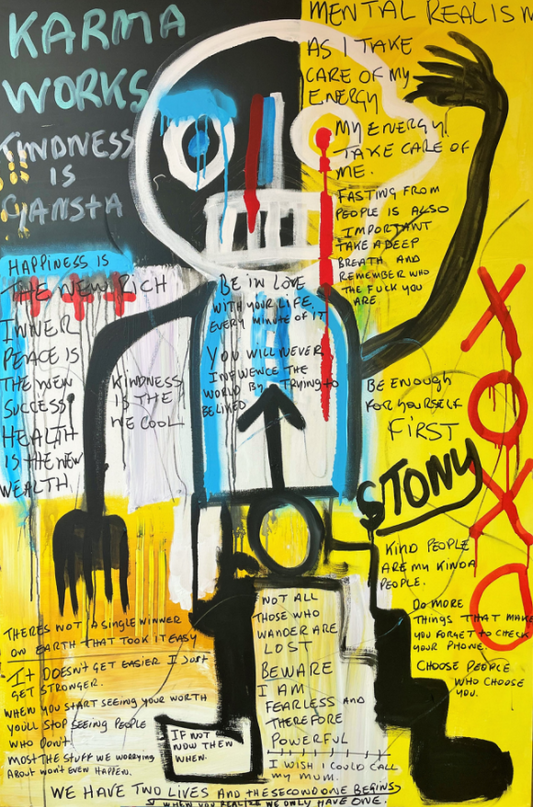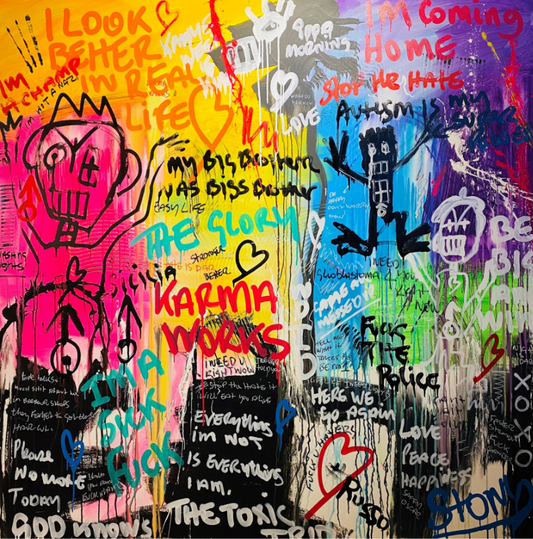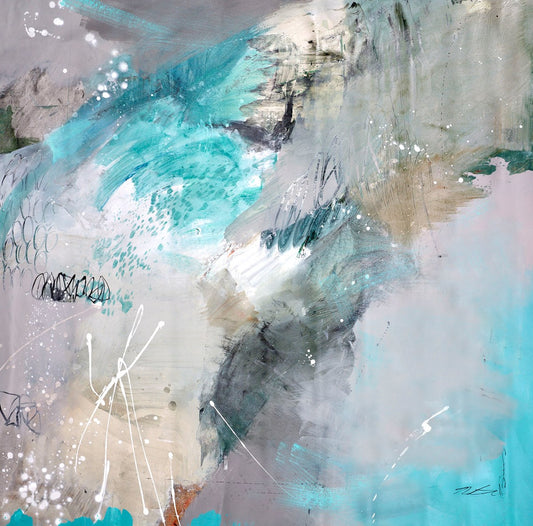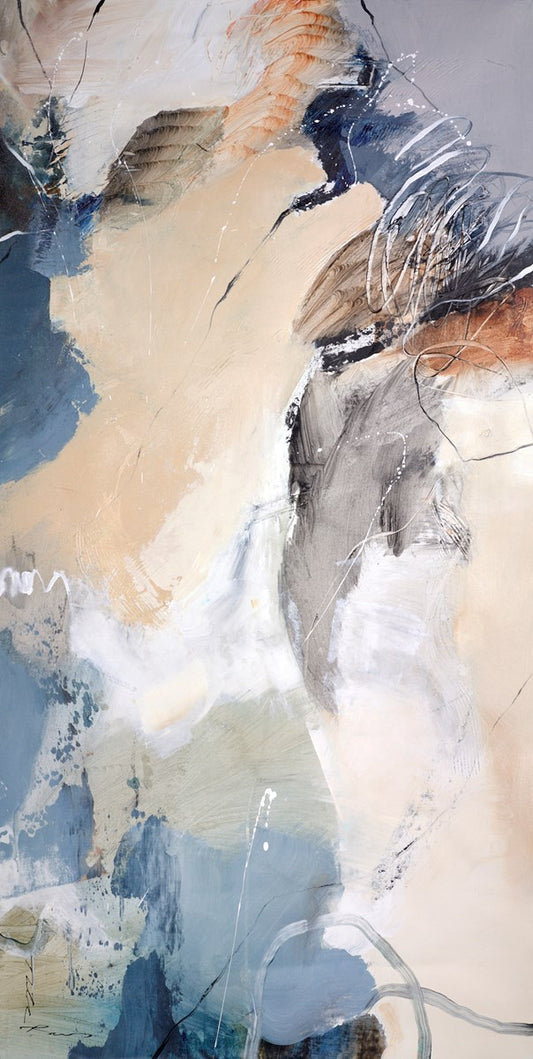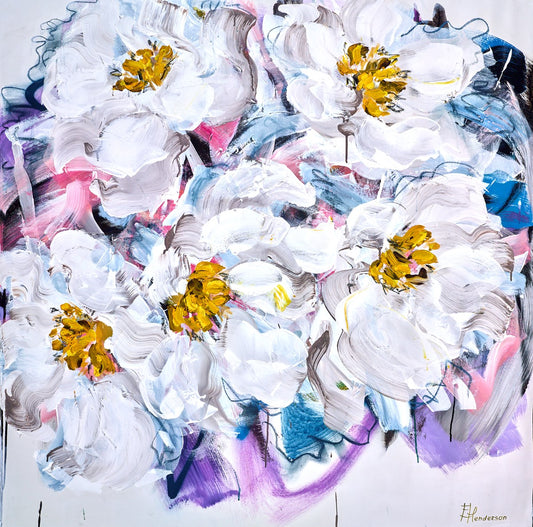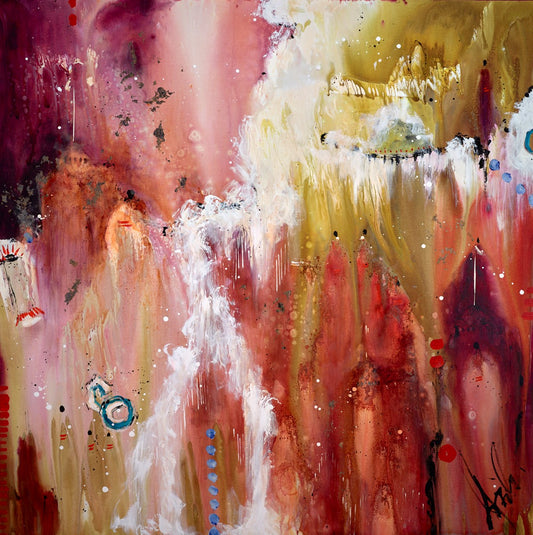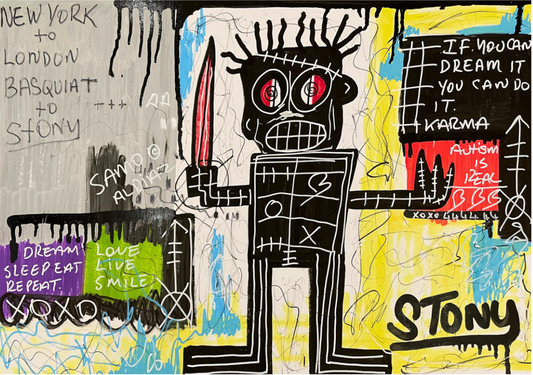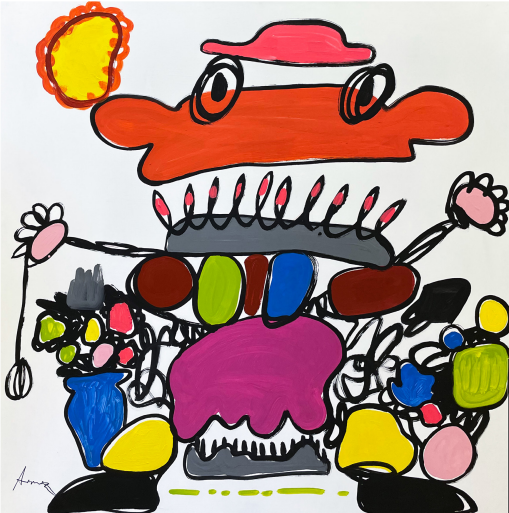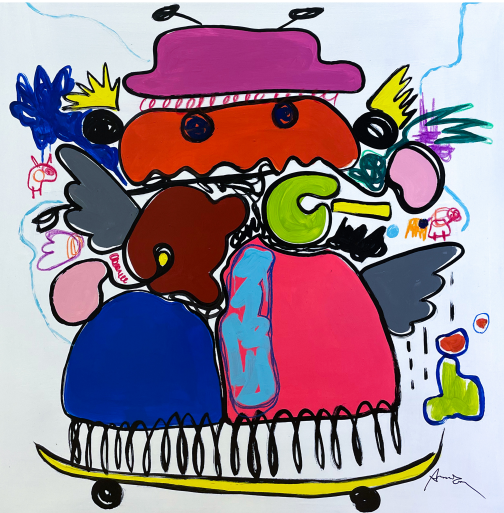Understanding the Essence of Abstract Art
Abstract art, a term often heard, yet seldom understood. It's a realm of art that defies the conventional, the tangible, and the representational. This art form, born in the early 20th century, has since evolved, influenced, and intrigued. It has sparked debates, inspired movements, and challenged traditional notions of aesthetics.
But what is abstract art? How does one navigate its complexities and appreciate its essence? On this page we aim to unravel the enigma that is abstract art. It delves into its origins, its key figures, and its philosophical underpinnings.
It explores the visual language of abstraction, its emotional resonance, and its place in contemporary context.
The Genesis of Abstract Art
Abstract art emerged in the early 20th century, a period marked by rapid societal and technological changes. It was a radical departure from the traditional art forms that sought to represent reality.
A New Art Form
Pioneers like Wassily Kandinsky, Piet Mondrian, and Kazimir Malevich dared to defy the conventional. They entered the realm of the abstract, creating unconstrained art. This marked the genesis of a new art form, one that continues to evolve and influence to this day.
Defining Abstract Art: Beyond Representation
Abstract art is an art form that does not attempt to represent an accurate depiction of visual reality. Instead, it uses shapes, colours, forms, and gestural marks to achieve its effect.
Abstract Creativity
However, defining abstract art is a complex task due to its varied styles and techniques. It ranges from the slightly abstracted but still recognisable forms to the completely non-representational compositions. It is a testament to the creativity that abstract art allows, pushing the boundaries of what art can be.
Philosophical Underpinnings and Art Theory
Abstract art has deep roots in philosophical thought and art theory. It emerged as a reaction to the realism and naturalism that dominated the 19th century. Offering a new way of seeing and understanding the world.
Foundations of Abstract Art
The philosophical underpinnings of abstract art have close ties to movements such as Expressionism and Cubism.
Expressionism
Expressionism sought to depict the emotional experience over physical reality.
Cubism
While Cubism fragmented the world into abstracted shapes and forms.
These movements challenged the traditional notions of representation, paving the way for the development of abstract art.
The Debate of Abstract Art
In the realm of art theory, abstract art has sparked intense debates. Some critics argue that it lacks the depth and complexity of representational art. While others see it as the purest form of artistic expression. The debate reflects the dynamic and evolving nature of abstract art, and its ability to provoke thought and discussion.
The Visual Language of Abstract Art
Abstract art communicates through a visual language of form, colour, and line. It does not rely on traditional representation of physical objects. Instead, it uses these elements to create a composition independent of visual references in the world.
Your Interpretation
This visual language allows abstract art to convey emotions and ideas that are not easily expressible through words. It invites viewers to interpret the artwork based on their own experiences and perceptions. Making the experience of viewing abstract art deeply personal and subjective.
Emotional Resonance and Psychological Impact
Abstract art has a profound emotional and psychological impact on viewers. Its non-representational nature allows it to bypass intellectual analysis and directly engage with the viewer's emotions. This emotional resonance can be both powerful and transformative. Evoking a wide range of feelings from calm and tranquility to discomfort and unease.
Challenging You The Viewer
The psychological impact of abstract art is also significant. It challenges viewers to question their perceptions and assumptions about art and reality. This can lead to a deeper understanding of oneself and the world, making abstract art a potent tool for self-reflection and personal growth.
Interpreting Abstract Art: Viewer's Perspective
Interpreting abstract art is a deeply personal and subjective process. This is unlike representational art, which often provides clear narratives or recognizably subjects. Abstract art invites viewers to create their own interpretations. This can be a liberating experience, allowing viewers to connect with the artwork on a personal level.
Your Personal Perception
However, this freedom can also be daunting for some viewers. Without a clear guide or narrative, it can be challenging to know where to start. It's important to remember that there are no right or wrong interpretations in abstract art. The value lies in the process of engagement and the personal insights that can emerge from this interaction.
Abstract Art in the Contemporary Context
Abstract art continues to evolve and influence contemporary art forms and design. It has permeated various fields, from graphic design to fashion, reflecting its enduring relevance and versatility. The advent of digital media is opening up new possibilities for the creation and distribution of abstract art. Allowing artists to experiment with new techniques and reach wider audiences.
Untraditional Notions
Yet, the essence of abstract art remains rooted in its ability to transcend language and cultural barriers. It continues to challenge traditional notions of beauty and aesthetics, pushing the boundaries of what art can be.
The Role of Intuition and Spontaneity
In the realm of abstract art, intuition and spontaneity play a significant role. The creation of abstract art often involves a departure from preconceived forms and structures. Allowing the artist's subconscious mind to guide the process. This can result in artworks that are deeply personal and reflective of the artist's inner world.
Unique Dynamism & Energy
Yet, this spontaneity is not without discipline. The use of colour, form, and line must still adhere to principles of balance and harmony. This delicate interplay between intuition and control is what gives abstract art its unique dynamism and energy.
Conclusion: The Universality and Accessibility of Abstract Art
Abstract art, with its emphasis on personal interpretation, has a universal appeal. It transcends cultural and language barriers, allowing for a shared experience of emotion and thought. This universality is one of the key strengths of abstract art, enabling it to engage with a diverse audience.



